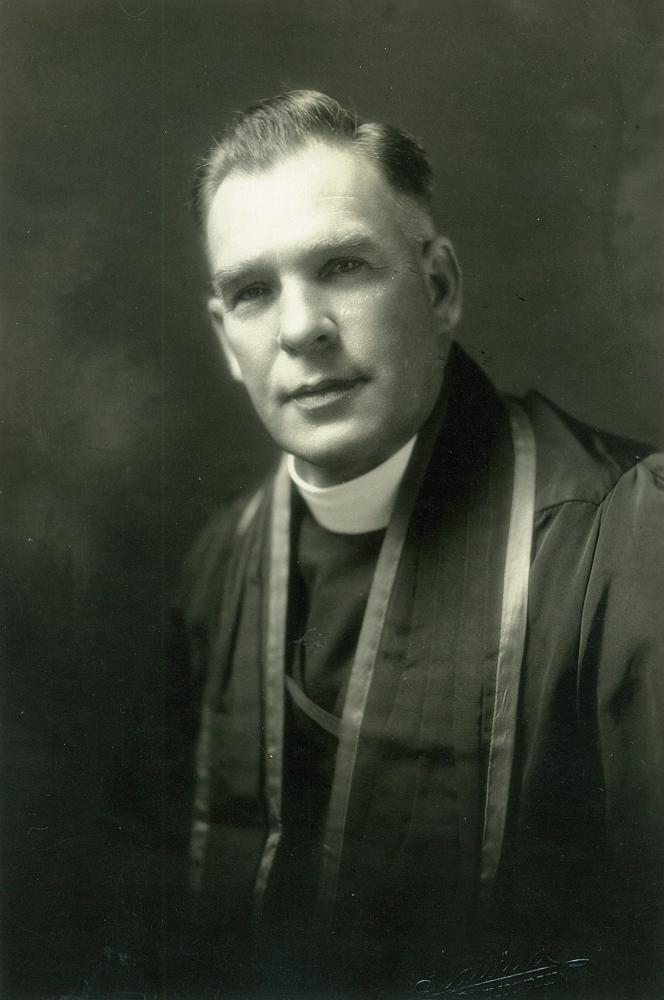
Radio Church
Leslie Bourneman Neale 1886 -1959
New Zealand's first radio broadcast took place on 17 November 1921 when Professor Robert Jack broadcast from Otago University’s Physics Department. Radio NZ is celebrating 100 years of public broadcasting with events celebrating various milestones, what radio means to us today, and some of the unforgettable moments and memories.
The newspapers of the time do not provide evidence of the immediate use of the new-fangled invention by the churches in New Zealand. It was altogether too new, too exciting and too uncertain. By the end of 1923 however – appropriately in the Christmas season – Trinity Church in Dunedin provided a ‘sacred concert’, featuring carols of course, over Station 4YA. F.J. O’Neill, the station manager, took it upon himself to follow that up with more broadcast carols nearer Christmas. It took a couple of years for ‘ordinary’ worship to be broadcast as a matter of course. Among the earliest users of the medium were the Edgeware Road and Rugby Street Methodist churches in Christchurch, to which Leslie Neale had just been appointed - using Radio Station 3AQ.
Radio was something of a challenge to the churches, and there was concern lest people preferred to stay at home and listen to a broadcast rather than attend worship. On the other hand, there are occasional newspaper accounts of the way in which American churches were using the new media and of the large numbers of people being reached. It was a matter of organisation and in those early years there was not much of that. It was not until the mid-1920s that there was any degree of systematic control over who might provide radio programmes. When the YA network was established in 1925, its priorities did not include religious broadcasting. Nor did the Methodist Church have any systematic policy – in fact it was not until 1939 that a connexional Radio Committee was set up. Shortly afterwards, WW2 broke out and strict controls were put in place to regulate broadcasting.
In the meantime, there were ministers and others who saw the possibilities, and made good use of them. One of the first was Colin Scrimgeour, for a time a Home Missionary in charge at the Auckland Methodist Mission. He was an innovator in radio worship, and when he finished at the Mission he became immersed in radio, to the point where he was eventually appointed Controller of National Commercial Broadcasting. But this article focuses on Leslie Neale who by that time was well into his lengthy and productive ministry as Superintendent of the Dunedin Methodist Mission. He had seen the possibilities of radio, as had been noted, In Christchurch in 1924. He saw it as a way of bridging the gulf between the Church and those otherwise indifferent to it.
In 1934 he founded the Radio Church of the Helping Hand. It was broadcast from Station 4ZM, a private operation run by Robert Walls, who had himself introduced ecumenical services over the air a couple of years earlier. Leslie Neale came from an Auckland Methodist family and entered the ministry in 1911. He served as a chaplain and was wounded at Passchendaele. He made a name for himself as an innovative leader while in the St Albans Circuit from 1924 -1931. He then spent over 20 years in Dunedin and is remembered for his initiatives in relief work during the Depression, in the establishment of a children’s health camp, and an aged care operation at Company Bay that ran for 60 years. He was President of the Conference in 1940. Leslie was awarded the MBE in 1947 for his public services. He died in Auckland in 1959.
Leslie Neale had had some experience in business before he entered the ministry and reading the story of his life one senses his thoroughly practical approach to his pastoral ministry. Leah Taylor, his biographer, calls him “A Man of Faith and Vision”. He was that and more, and it could even be said that there was something of the entrepreneur about him – he was not afraid to use the media to further the work of the gospel. Leah’s book provides a detailed and fascinating insight into the world of religious broadcasting in its formative years. When the Mission ceased its involvement with Radio Church, it was one of the longest continuing radio programmes in the world – the best part of 70 years Sunday by Sunday.
At this time, when Covid-19 has forced the Church to look at new ways of communicating, and this year’s Conference is being zoomed to its participants, there is a challenge, as never before, to find new ways in which the Good News can be shared. Thinking outside the square takes on a new meaning especially when the square is a computer screen.
